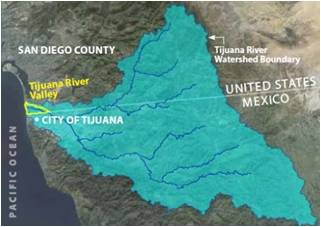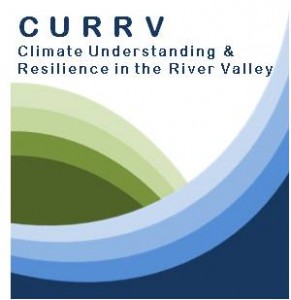Click here for CURRV informational products and reports
Click here for a list of CURRV events, including working group meetings, expert workshops, and trainings
Click here to explore our resilience portal
Tijuana River Valley: A Threatened but Resilient Ecosystem

The Tijuana River Valley (TRV) contains the largest intact coastal wetland system in Southern California, despite intense pressure from development associated with being situated on an international border between two major metropolitan areas- San Diego (California, United States) and Tijuana (Baja California, Mexico). Unlike most other coastal ecosystems in the region, which have been fragmented or lost altogether, the Valley has contiguous beach, dune, salt marsh, riparian, and upland ecosystems. These habitats are largely in public ownership, managed by the National Oceanic & Atmospheric Administration, US Fish & Wildlife, California State Parks, County of San Diego, and City of San Diego.
Why this project*?
Climate change will effect the long-term ecological viability of natural ecosystems, while

impacting the social and economic health of the surrounding communities. Fortunately, the Tijuana River Valley has been the focus of major restoration, conservation, and research efforts, making it a regional system able to accommodate impacts associated with our changing climate. In order to maintain and improve the resiliency of the TRV, we must strengthen our understanding of local vulnerabilities to climate change and develop adaptation strategies to address the impacts that threaten the future sustainability of important natural ecosystems and human communities.
Project Objectives
The overarching goal is to build upon a regional commitment to understand and adapt to climate change. In order to achieve this goal, the Tijuana River National Estuarine Research Reserve (TRNERR) will collaborate with a diverse stakeholder group to conduct a vulnerability assessment that informs the development of an adaptation strategies addressing the impacts of climate change, specifically sea level rise and riverine flooding. This project will aid the Tijuana River Valley Recovery Team (TRVRT) in addressing one of its priority action areas listed in the Recovery Strategy as a way to help protect and enhance natural resources throughout the region. The development and implementation of this adaptation strategies will help local communities adapt to climate change, and increase ecosystem resiliency by providing jointly developed recommendations to coastal decision-makers on how to consider climate change in managing our natural resources and built infrastructure.

A Collaborative Approach

TRNERR will lead a team that builds on well-established partnerships through the TRVRT and is expanded to include perspectives among federal, state, regional, county, and local public agencies; universities; nonprofits; and private consultants throughout the development and implementation of the adaptation strategies. This process will improve the ability of public agencies in the TRV to adapt to climate change, as well as offer tools for effective participatory ecosystem-based management in light of these changes.
*Funded by a grant from the Coastal and Ocean Climate Applications Program of the National Oceanic and Atmospheric Administration (NOAA) Climate Program Office. Also supported in part by a grant from the National Estuarine Research Reserve System (NERRS) Science Collaborative.

